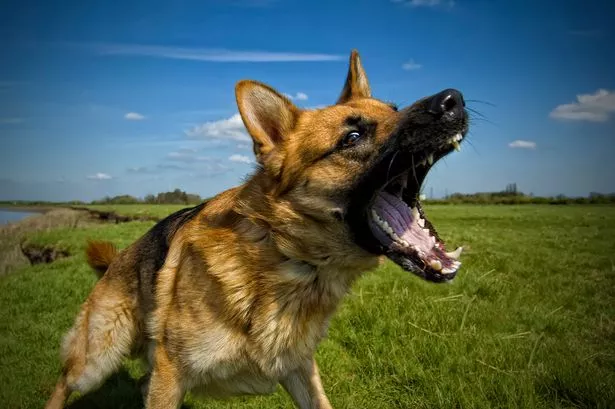When I heard the sound of an angry grunt, it struck me right away. It wasn’t just a noise; it was like feeling someone’s frustration without any words. That moment showed me how much emotion can be packed into a single sound.
“Sound of an Angry Grunt”: An angry grunt is a primal, guttural sound made when someone is frustrated or annoyed. It’s not just humans—animals grunt too. This visceral sound has deep evolutionary roots and can affect social dynamics and media portrayals.
we’ll explore what an angry grunt really is, from its primal origins to how it influences our emotions and interactions today. We’ll dive into why this simple sound packs such a powerful punch and how it shows up in everything from sports to movies. Stay tuned to uncover the surprising impact of this everyday noise!
What exactly is an angry grunt?
An angry grunt is a deep, low sound people make when they’re feeling frustrated, annoyed, or angry. It’s a natural and instinctive reaction, not something people usually plan or think about. Instead of using words, this grunt helps release built-up emotions in a quick and raw way.

It’s not only humans who make this sound; many animals grunt too when they’re upset or agitated. This sound is more than just noise—it can show strong feelings and even change the way people interact with each other. Angry grunts have been around for a long time, going back to our early ancestors.
They are a primal part of how we communicate emotions and can have different meanings depending on the context. Whether in daily life or in media like movies and sports, angry grunts are a powerful way to express feelings.
Why do people make angry grunts?
People make angry grunts as a way to release and express strong emotions like frustration or annoyance. When someone is upset, grunting is a natural, instinctive reaction that helps them vent their feelings without using words. It’s a quick way to show that they’re not happy or are feeling overwhelmed.
The grunt often comes out when someone is dealing with a challenging situation or has reached their limit. It’s a primal response that has been around since our ancestors, helping to communicate emotions in a straightforward and physical way. In short, angry grunts are a simple, yet powerful, way to let out and signal strong feelings.
Read Also: Holly Bankemper – Career, Family Life!
Do animals make angry grunts too?
Yes, animals also make angry grunts when they’re feeling upset or threatened. Just like humans, animals use these sounds to express frustration or assert their feelings. For example, dogs might grunt when they’re annoyed or in a confrontation, and some wild animals use grunts to warn others or show aggression.

These sounds are instinctive and help animals communicate their emotions quickly and effectively. Grunting is a basic, primal response that is common across many species, showing how this form of communication is deeply rooted in nature.
What are the evolutionary roots of angry grunts?
- Early Communication: Angry grunts are rooted in early human communication, used to express strong emotions before complex language developed
- Survival Mechanism: These sounds helped early humans signal danger, show displeasure, or warn others without needing words.
- Primal Instinct: Grunting is a basic, instinctive response that has been preserved through evolution to help humans and animals react to threats or challenges.
- Emotional Expression: The grunt served as a simple way to express and release pent-up emotions quickly and effectively.
- Social Interaction: This form of communication helped early humans navigate social dynamics and establish group cohesion or dominance.
Read Also: The Fascinating World of Marcas Ciminhole: Unveiling Ancient Healing Traditions
How does an angry grunt affect social interactions?
An angry grunt can have a big impact on social interactions. When someone grunts angrily, it often signals strong feelings like frustration or irritation to those around them. This sound can influence how people respond—some might feel intimidated or uncomfortable, while others might become more empathetic or cautious.
It can change the mood of a group, either creating tension or prompting a response to address the issue. Grunting can assert dominance or highlight dissatisfaction, affecting relationships and communication. Overall, the grunt acts as a powerful emotional signal that can shift how people interact and react in various situations.
Are angry grunts common across different cultures?
Yes, angry grunts are found in many cultures around the world. While the sound and how people interpret it can vary, the basic idea of using grunts to show anger or frustration is pretty common.
In some cultures, an angry grunt might be a normal way to express irritation, while in others, it might be seen as rude or aggressive. Even though people might react differently depending on their cultural background, the use of grunts as a way to communicate strong emotions is a widespread and natural human response.
This shows that while cultures might differ, the primal act of grunting connects people across the globe.
Read Also: 2024-361163 Echo Tech Glendale Memorial Hospital and Healt
How are angry grunts used in sports?

In sports, angry grunts are often used by athletes to boost their performance and show intensity. When players grunt during a game or workout, it helps them channel their energy and focus more on their effort.
For example, tennis players might grunt when hitting the ball, weightlifters grunt while lifting heavy weights, and martial artists grunt during a fight. These sounds can also intimidate opponents or signal frustration.
Grunting is a natural way for athletes to express their physical and emotional state, making it a common part of competitive sports.
What role do angry grunts play in the media?
In the media, angry grunts play a crucial role in adding realism and intensity to scenes. Whether in movies, TV shows, or video games, these grunts help convey a character’s emotions like frustration or rage. Sound designers use grunts to make scenes feel more vivid and engaging, enhancing the audience’s connection with the characters.
By incorporating these sounds, creators can express emotions more effectively and make dramatic moments more impactful. Angry grunts also contribute to the overall atmosphere, helping to immerse viewers in the story and heighten the emotional experience.
Can you train yourself to control or reduce angry grunts?

Yes, you can train yourself to control or reduce angry grunts. By practicing techniques like mindfulness and deep breathing, you can learn to manage your emotions better. Stress management strategies, such as regular exercise and relaxation exercises, also help in reducing the frequency of these grunts.
Being aware of your triggers and working on calming responses can make a big difference. Over time, these practices can help you respond to anger in a more controlled and less instinctive way. With effort and patience, you can gain better control over yo4o mini
What are the benefits of using angry grunts in therapy?
Using angry grunts in therapy can have several benefits. Grunting can help people release and express strong emotions, which can be very therapeutic. It provides a physical outlet for pent-up feelings, helping individuals feel more relaxed and less overwhelmed.
In some therapy practices, making these sounds can help people process and understand their emotions better. This method can also make it easier to connect with and talk about feelings that are hard to express with words. Overall, incorporating grunts into therapy can support emotional healing and improve mental well-being.
FAQs:
How do angry grunts help in therapy?
Angry grunts help by providing a physical outlet for intense emotions, which can make it easier to release and process feelings.
What types of therapy use angry grunts?
They are used in therapies like primal therapy, where physical expressions of emotion, such as grunting, aid in emotional healing.
Can angry grunts be combined with other therapeutic techniques?
Yes, they can be used alongside other methods like talk therapy, mindfulness, or stress relief exercises to enhance emotional processing.
Are there any benefits to using angry grunts in therapy?
Yes, they can help with emotional release, improve emotional understanding, and make therapy sessions more engaging and effective.
Conclusion:
The sound of an angry grunt is a powerful and primal form of emotional expression. Rooted in our evolutionary past, it serves as a raw, instinctive way to communicate strong feelings like frustration and anger.
Whether in sports, media, or therapy, angry grunts have significant impacts, from enhancing performance and adding realism to aiding emotional release and understanding.
Read Also:
